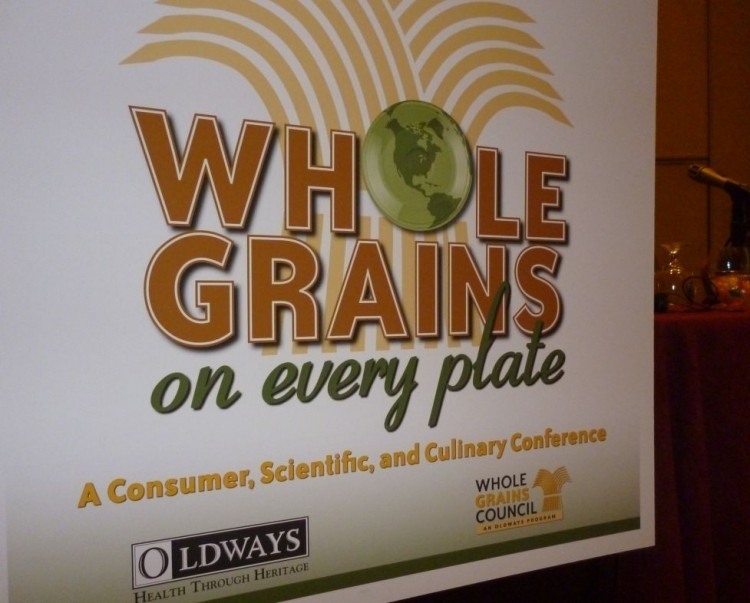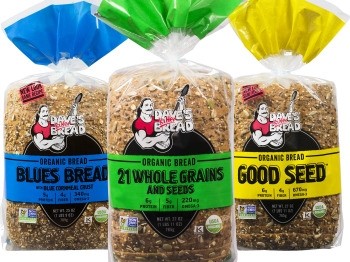Dispatches from the Whole Grains on Every Plate conference
Whole Grains on Every Plate Day two: ConAgra on how to grow amid '50 shades of beige’

Speaking on day two of the Whole Grains on Every Plate conference in San Antonio, ConAgra Mills’ director of consumer research David Sheluga PhD, said consumers - especially those of Asian or Latino origin - are increasingly shunning traditional center of store categories and seeking out more colorful foods with less starch.
“I call it the 50 shades of beige phenomenon”, he said. “Beige foods are on the downslide.”
Consumers trust the Whole Grains stamp!
For example, in 2007 to 2010 alone, unit sales of loaves of bread (ie. volumes) were down 4%, he said, and while whole wheat bread was up 19% versus a 13% slide for white bread over that period, the bread category as a whole is in decline.
The challenge facing companies making wholegrain products, therefore, is to “increase their market share of categories that are flat or declining overall” such as bread and ready-to-eat cereals, he said.
Meanwhile, although sales of foods containing the official Whole Grain stamp are rising in the US (up 9% in the year to June 2012 according to SPINS), sales of foods with any kind of whole grain claim or a multigrain claim have been flat since around 2008.
"Whole grain sales have stalled in America. They have rebounded a bit in the past couple of years but that is probably due to cost inflation."
The figures correlated with recent consumer research conducted by ConAgra revealing distrust and confusion about manufacturers’ claims about wheat, whole grains, multi-grains and general grain-related claims, but strong support for the official Whole Grain stamp, he added.
Consumers trust the official Whole Grains stamp
But how can manufacturers go about encouraging more white bread fans to switch to wholegrain?
First, use the stamp, he said. "People trust the stamp". And put it next to the Nutrition Facts panel, a part of the package these shoppers trust:
“It’s the next best thing if we can’t put whole grain content in the Nutrition Facts panel.”
Second, think about your terminology. While many whole grain enthusiasts like the denser, grainier texture of whole grain products and look out for the phrase ‘whole grains’, white bread fans prefer the term ‘whole wheat’, which sounds softer, milder and tastier, he said.
"Think about designing whole grain products that are milder and non-grainy for white bread consumers and ways to deliver price parity."
Third, think about your messaging. White bread consumers are more interested in how whole grains could give them sustained energy or manage their weight than messages about disease risk reduction, he pointed out.
"They are really not interested in hearing about disease control."
His comments were echoed by Maria A Worley, RD, owner of consultancy Serving Spoon.
She said: “There is an incredible amount of confusion about whole grains, particularly around labeling. Is a ‘12 grain’ bread whole grain? Is ‘whole wheat’ the same as ‘whole grain’? If you use the Whole Grain stamp, it’s simple. Then consumers know where they are.”
Is price holding back whole grain momentum?
But what about price? Is this holding back whole grain momentum?
Yes and no, said Whole Grains Council and Oldways director of food and nutrition strategy Cynthia Harriman.
In many cases, notably rice, tortillas, cereals and granola bars, whole grain products have reached price parity with their refined grain counterparts, she claimed.
However, the price of whole grain sandwich bread, pasta, bagels, rolls and cookies still remains stubbornly higher than refined grains equivalents, although the differential is shrinking.
And feeding a family of four for a week with 100% wholegrain versus refined grain products will be a bit more expensive, she said.
Prices will come down
However, if you compromise and switch half of the grains to wholegrain (as per the 2010 Dietary Guidelines), and focus on using whole grain products that have reached price parity (rice, breakfast cereals etc), it is possible to do so without raising your grocery bill, she said.
Ideally, of course, consumers should not have to pay more for any whole grain product. But prices for some products will only come down once a critical mass has been reached, she predicted.




















